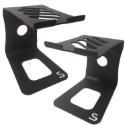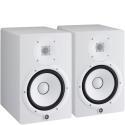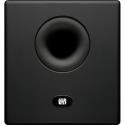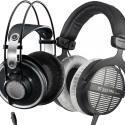Near-Field Speakers and Monitors Explained in Basic Terms
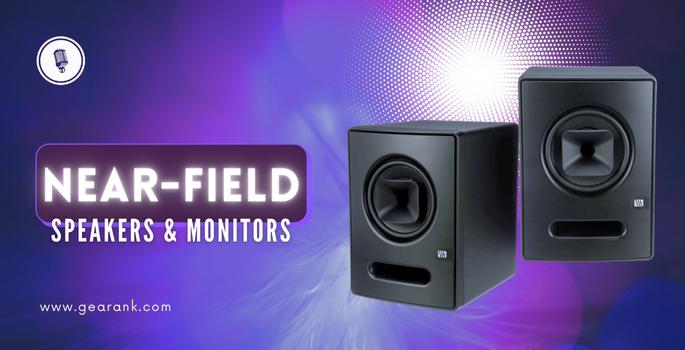
Near-Field SpeakersThese are monitor speakers designed for close range listening. You hear more of the direct sound from the speakers, and less of the reflected sound by the room, which allows for accurate monitoring. |
It is important to choose the right speaker monitor for music production. When it comes to mixing and mastering, the best studio monitors are near-field speakers.
They are popular across all sizes of studios, from home studios to big professional ones. But what makes these studio monitors so special compared to regular speakers?
In this article, I will discuss the importance of a nearfield studio monitor in detail.
As you learn more about these speakers, you will realize why they are a must-have for any music producer.
It is safe to say that without a near-field studio monitor, it is impossible to achieve a properly mixed track. So, if you want to produce high-quality audio, read through the end.
What are Near Field Speakers?
Near-field home studio speakers are designed to deliver sound within close range. With smaller drivers, typically between 5′′ and 8′′, these speakers are more suited for a small room size.
As a result, you hear more of the direct sound coming from the speakers. This lessens the reflected sound that is bouncing around the room.
A typical near-field studio monitor has two separate drivers: a tweeter and a woofer. A tweeter produces the higher frequencies, while the woofer covers the lower frequencies.
Other speaker types will have a frequency range that covers not only the high and low frequencies but also the mid frequencies. These speakers with a broader frequency spectrum will produce an accurate sound. This is an important quality as you fine-tune detailed work.
Near-field monitor pairs also provide a flat-frequency response. But because of their smaller drivers, the sound seem to be lacking bass.
But this is enough to produce an accurate representation of what a customer will hear. What this means is that it gives out audio free from coloration or enhancement.
Most nearfield studio monitors these days are active speakers. They have built-in amplifiers, meaning they don't need an external amp to power the speakers.
Why Use Nearfield Monitors?
Close Proximity: Because near-field monitors are placed at a closer range, they create a shorter distance for sound waves to travel. This reduces the effect of room reflections. This enables you to hear a more direct sound coming from your main monitors, and less of the room.
Flat Frequency Response: Near-field monitors provide a balanced (flat-frequency) response. You get a clear stereo image of your audio, free from coloration or enhancement. This honest audio representation is crucial for tracking, mixing, and mastering as it makes spotting flaws in your tracks easier. However, because of their smaller drivers, most people often perceive them to lack bass response. But in reality, they produce a balanced or equal sound.
Compact Size: Most monitors in studios these days are active monitors. They have built-in amplifiers, meaning they don't need an external amp to power the speakers. This makes them great for smaller studios as they will not take up a lot of space.
How to Listen to Near Field Studio Monitors?
Set your near-field studio monitors on your studio mixing desk or a monitor stand. It's also a good idea to use monitor isolation pads if they're going to be sitting on top of a hard surface. This will eliminate resonances.
Place the near-field monitors around 2 and 4 feet away from where the listener is supposed to sit. Ideally, the tweeters should be aligned with your ear level.
The ideal listening position is at the mid-way point between the two speakers. You can achieve this by placing an equal listening distance between you and the two speakers, forming an equilateral triangle.
This monitor placement and listening position place you in the sweet spot for monitoring an audio recording, allowing you to hear the sound clearly from both speakers.
What is the Best Speaker for a Studio?
When it comes to home and professional studios, near-field monitors are the industry standard. They provide a neutral or flat-frequency response, which is important in music production.
Nearfield monitors can project sound to a distance of around 1 meter. They're also relatively cheaper and come in a compact size perfect for smaller studios.
Far-fields, in contrast, are generally larger speakers commonly seen in a big-room studio. Because of this, they will offer more reflected sound from the room's acoustics. They feature big drivers and sometimes have more than one. Due to their size, far-fields are frequently positioned at least 8 feet or more from the listening position.
In general, near-field monitors are the standard for professional or home studio mixing. The use of far-field monitors can provide an additional dimension to the sound if needed. If you're just starting out, you can't go wrong with using only near-field monitors.
Final Thoughts
Near-field speakers are a must-have for music producers and audio engineers. They can produce accurate representations of your recorded audio. Near field studio monitors are essential tools that help achieve optimal recording sound quality.
These speakers must be positioned closer to the listener to allow the sound to be free from any colorations added by room acoustics. The use of mounts or stands is also recommended to help avoid desk vibrations.
Moreover, it is essential to place them correctly in proportion. This listening position will help you hear a more balanced sound.
Frequently Asked Questions
Can You Use Far Field Monitors for Near Field Listening?
No, these speakers are designed to have more power to reach further distances. This means they'll need to sound loud to be effective.
Placing far-field monitors similar to a near-field distance will cause hearing fatigue. Their louder bass response will also pose an issue for detailed work.
What Is the 38% Rule?
The 38% rule is considered the ideal listening position found in a rectangular room. Your listening position should be 38% away from the shortest wall. This position helps minimize the issues with room acoustics and gives you a more balanced listening experience.
What's The Difference Between a Headset Monitor from a Speaker Monitor?
Both of them are used for mixing and monitoring audio recordings. But each one functions slightly differently.
A headphone monitor provides direct sound to your ears. These headphones isolate your ear from the room. So, you'll only hear the sound of the recorded audio directly from your mix.
A speaker monitor, on the other hand, projects sound into the room. What you hear as a result is how your recorded audio interacts with the acoustics of a room.
What's the Difference Between Studio Monitors vs Speakers?
The difference between studio monitors vs speakers is more simple than you might expect.
A studio monitor is designed to have a flat-frequency response. Its flat response allows for a more clear and faithful representation of an audio mix. It's great for mixing and mastering.
Speakers, on the other hand, are a general term for an audio playback system. Different speakers have different priorities, be it looks, enhancing frequencies or specific tonal qualities. Ultimately, commercial speakers color the sound to provide the most pleasing audio for the listener.
Contributors:
- Raphael Pulgar - Editor
- Jerry Borillo - Illustrator




